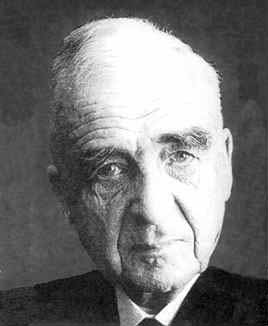
Paul Finsler
 المؤلف:
J J Burckhardt
المؤلف:
J J Burckhardt
 المصدر:
Die Mathematik an der Universität Zurich 1916-1950 unter den Professoren R Fueter
المصدر:
Die Mathematik an der Universität Zurich 1916-1950 unter den Professoren R Fueter
 الجزء والصفحة:
...
الجزء والصفحة:
...
 27-7-2017
27-7-2017
 1065
1065
Born: 11 April 1894 in Heilbronn, Neckar, Germany
Died: 29 April 1970 in Zurich, Switzerland

Paul Finsler attended a grammar school in Urach, the between 1908 and 1912 he attended a secondary school in Cannstatt. After leaving school he entered the Technische Hochschule in Stuttgart where Kutta was among his teachers. Then in 1913 he entered Göttingen to undertake graduate studies. Among his teachers at Göttingen were a host of top mathematicians including Hecke, Hilbert, Klein, Edmund Landau, Runge, Born and Carathéodory.
Finsler' doctoral dissertation was supervised by Carathéodory on Curves and surfaces in general spaces. This secured Finsler a name for himself as a differential geometer. In fact in 1934 Cartan wrote a book Les espaces de Finsler which established Finsler's name in differential geometry. A Finsler space is a generalisation of a Riemannian space where the length function is defined differently and Minkowski's geometry holds locally.
Differential geometry was not Finsler's research topic for long since he moved to take up set theory. Finsler's habilitation thesis was submitted to the University of Cologne in 1922 and the following year he have his inaugural lecture on Are there contradictions in mathematics. This attempted to remove contradictions, as stated in [2]:-
Concerning ... Russell's paradox, Finsler points out that one needs to distinguish between satisfiable and unsatisfiable circular definitions. Russell's definition of the set of all sets which do not contain themselves is a non-satisfiable circular definition.
In 1927 Finsler was appointed to the University of Zurich, becoming an Ordinary Professor there in 1944. At Zurich, in addition to his work on set theory he also worked on differential geometry, number theory, probability theory and the foundations of mathematics.
Finsler's set theory was in the spirit of Cantor. Both were Platonists and as described in [2]:-
He believed in the reality of pure concepts. Together they form the purely conceptual realm which encompasses all mathematical objects, structure and patterns. ... Mathematicians do not invent or construct their structures and propositions, they recognise or discover, how these objects in the conceptual realm are interrelated with each other.
In 1926 Finsler produced the first part of a major work on set theory On the foundations of set theory. He intended to publish the second part as a continuation of his theories but his plan changed when the first part came under attack. In the end he wrote part two as a defence of part one in 1965 rather than what he originally intended. We quote from [2]:-
... Finsler develops his approach to the paradoxes, his attitude towards formalised theories and his defence of Platonism in mathematics. He insisted on the existence of a conceptual realm within mathematics which transcends formal systems. From the foundational point of view, Finsler's et theory contains a strengthened criterion for set identity and a coinductive specification of the universe of sets. ... Combinatorially, Finsler considers sets as generalised numbers to which one may apply arithmetical techniques.
Of course, as mentioned above, the set paradoxes were of particular significance to Finsler. Again quoting from [2]:-
[Finsler] maintained that consistency is sufficient for the existence of mathematical objects. Furthermore, he thought that the antinomies which led to the foundational crisis, could be solved without the notion that existence is equivalent to formal constructability.
Books:
- J J Burckhardt, Die Mathematik an der Universität Zurich 1916-1950 unter den Professoren R Fueter, A Speiser und P Finsler (Basel, 1980).
Articles:
- D Booth and R Ziegler (eds), Finsler Set Theory.
- H Breger, A restoration that failed: Paul Finsler's theory of sets, Revolutions in mathematics (New York, 1992), 249-264.
- H Gross, Nachruf Paul Finsler, Elemente der Mathematik 26 (1971), 19-21.
 الاكثر قراءة في 1890to1894
الاكثر قراءة في 1890to1894
 اخر الاخبار
اخر الاخبار
اخبار العتبة العباسية المقدسة


